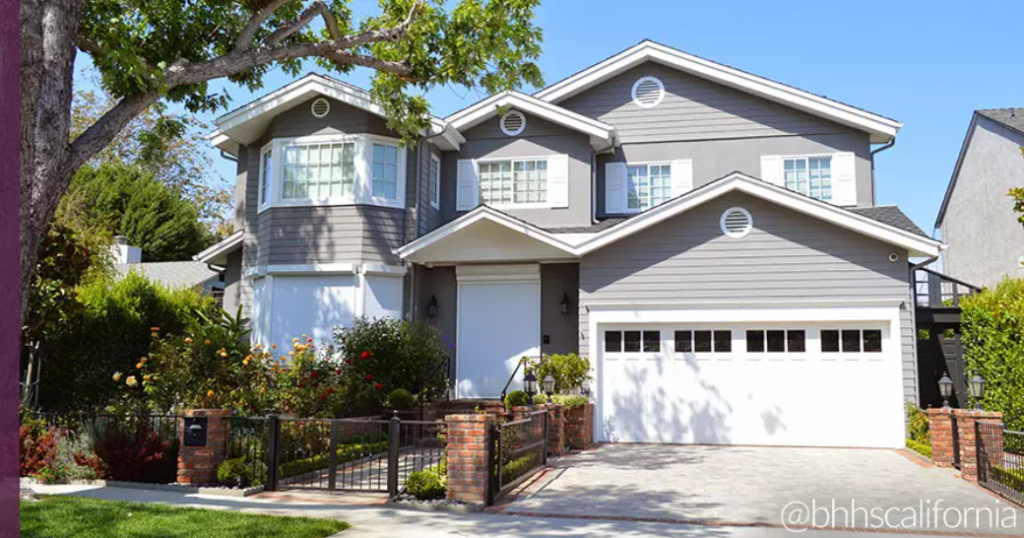
Author: Berkshire Hathaway Home Service | California Properties
Finding a home comes with a whole host of decisions. You have to factor in the neighborhood, nearby amenities, and market trends. You need to consider all of your wants and needs, plus plan for the future growth of your family and the roots you want to put down. All of this gets even more compounded when you consider getting a home in California, a beautiful state that often tends to have higher property prices than other states.
One of the biggest choices that homebuyers have to make is buying an existing property or building an entirely new house. Buying and building come with their own advantages and disadvantages, but neither choice is wrong. Much of it comes down to personal preference. If you’re wondering, “should I buy or build a house?” read on to help with your decision.
Building a house
Building a house is an endeavor all in itself, but it’s not as straightforward as you think. There are different types of new home builds, and depending on your needs, one might be more suitable than the others.
Custom homes are likely what most people think of when they think of building a new house. This involves working with a homebuilder to draw up entirely new floor plans. Every little feature and detail, from the foundation to the roof, is tailored to your exact needs. Basically, a custom home is a house built for your specific needs.
Tract home builders buy up large tracts of land that they then split into smaller plots build homes. Unlike custom homes, tract homes are generally built from the same few floor plans. You might get a choice of which floor plan you want and some basic finishes, but the home design is otherwise fairly set.
Spec home builders are something of a middle ground between custom and tract homebuilders. Spec home builders purchase a plot of land and build one or two homes on that property. These homes are built to be move-in ready before a buyer ever even makes the purchase. “Spec” is short for “speculative,” meaning the homebuilder speculates that someone will want to purchase the home once it has completed construction. One of the tips of building a spec home is the design does not have the same “cookie-cutter” feel as a tract home, but the home builder will still use reliable plans based on past builds and current market trends.
These home builds have their own advantages and disadvantages, but overall, they are all still newly built homes that no one has previously lived in.
The advantages of building a house
Building an entirely new house from the ground up can be a dream that can feel like the best choice for many. Building a house certainly comes with advantages.
Customization
The biggest advantage to building a house of your own is the level of customization. You can get exactly what you want (or at least very close to it), as opposed to compromising or living with the existing features of a home.
Control
Building a house also gives you total control over the whole process. You get to hire all the right people for the job, and your input goes into everything from the floor plans and design to the finishes and appliances.
Newer appliances and home systems
Whether it’s a tract home or a custom build, you are almost assuredly getting new appliances and home systems, including the HVAC, plumbing, and insulation. That gives you an immediate leg up on convenience, along with the general tech upgrades that come with newer appliances. New appliances and home systems are generally more energy-efficient, ensuring a minimal impact on the environment while keeping your monthly utilities relatively low. While everything in your home will eventually need some maintenance, new appliances and home systems that have never been used mean that you likely won’t have to worry about maintenance, repairs, or replacements until much later in your home’s life.
Newer materials are also literally better for you. It’s not uncommon to still find older homes that contain lead paint, asbestos, mold, or other harmful materials and substances. With a new home, you can use modern materials and finishes that are decidedly non-toxic.
Investments
Newer homes make (potentially) better investments. That’s not to say that you can’t sell an older home and recoup your money, but you will generally see more profits with a new home upon resale. Prospective homebuyers typically find newer homes more appealing than older homes.
Personal connection
As you live, eat, and sleep on the property, any home you exist in for long enough will naturally come with a personal connection. However, there’s something to be said for the distinct emotional connection that comes with a new home. You knew the home when it was just a slab foundation, and you were the first to live there.
The disadvantages of building a house
High upfront cost
While you may make a profit upon resale, the process of building a house typically has a higher upfront cost than buying an existing property. The exact costs will depend on size of the home, the location, and the type of home build. A new home construction will usually cost about $100 to $200 per square foot, though custom luxury options can cost over $500 per square foot.
In California, a new home will generally cost about $600,000. Keep in mind that does not take into account how much the land cost, excavation, and permits.
Limited location
While you might have control over the construction, you may have less control when it comes to finding the right location. There are only so many open plots of land, and if you are looking for a specific spot with a great view or other desirable amenities, you can expect to spend a lot more to get it.
Risky loans
As a new home naturally doesn’t have collateral, getting a loan to pay for land and the property itself can be difficult. These loans typically come with a higher down payment and higher interest rates to compensate for the risks.
Time
Unsurprisingly, building a home takes time. The exact amount of time will depend on the build and the size of the house. A new tract home can take upwards of five to six months, while a custom build can take over a year, from breaking ground to moving in.
The advantages of buying a house
Convenience
Buying an existing property or established house is simply more convenient. That’s not to say that a home purchase is without its own stress and complications, but those are generally more manageable than the stress of constructing an entirely new home. You can expect an existing property to be at least livable with features that you can work with.
Most conveniently, the timeline is a lot shorter with an existing home. You don’t have to wait an entire year for construction, and even with mortgage processing, you can typically move into a home within a couple of months.
Lower cost
This will obviously vary based on a ton of other factors, but buying a house is generally cheaper than building an entirely new home. In California, the median price for homes will hit about $800,000 in 2021. Home loans also carry less risk than land loans, ensuring a lower down payment and less interest. That makes it easier to get your foot in the door.
More location options
In developed areas, it can be much easier to find an existing home in a desirable area than finding a suitable lot that hasn’t already been developed. If location is important, it may be a better idea to buy a home than build a new home.
Later home renovation
Buying a home doesn’t always mean you’re stuck with what you get. You can save up for renovations, improvements, and new appliances as you live in the home. Depending on the zoning and HOA policies, you may be able to add extensions and build out your home for your growing family.
The disadvantages of buying a home
Competition
Buying a home can be fiercely competitive, especially in a seller’s market. This can cause significant bumps in asking prices and generally make for a harder buying process. There are steps you can take to make yourself stand out, but things can get long and drawn out, especially if you end up in a fierce bidding war. You have to be ready to hit the ground running.
Compromises
Buying a house typically means compromising on floor plans. Even with potential renovations, it’s generally difficult to change up an entire floor plan without massive costs and construction.
Maintenance
Everything in an existing home has been used. The home may have older appliances, electricity, plumbing, and other major home systems, meaning that you will likely have to deal with maintenance and repairs sooner than later.
Lower energy efficiency
Related to the above, older home systems and appliances also tends to mean less energy efficiency, resulting in higher utility costs and a bigger carbon footprint. You may be able to upgrade or retrofit some of your systems, but that results in higher costs upfront.
To buy or build
Ultimately, there is no wrong choice when it comes to buying or building a home. Much of it comes down to personal preference and what you want out of your house, along with your costs and personal timeline. If you need to move immediately because of work, it might be better to buy a home, but even then, tract homes and spec homes make it possible to move into a newly built home quickly.
If you need assistance, contact us today! We can work with you to determine your needs and figure out the best option for the perfect home in California.

